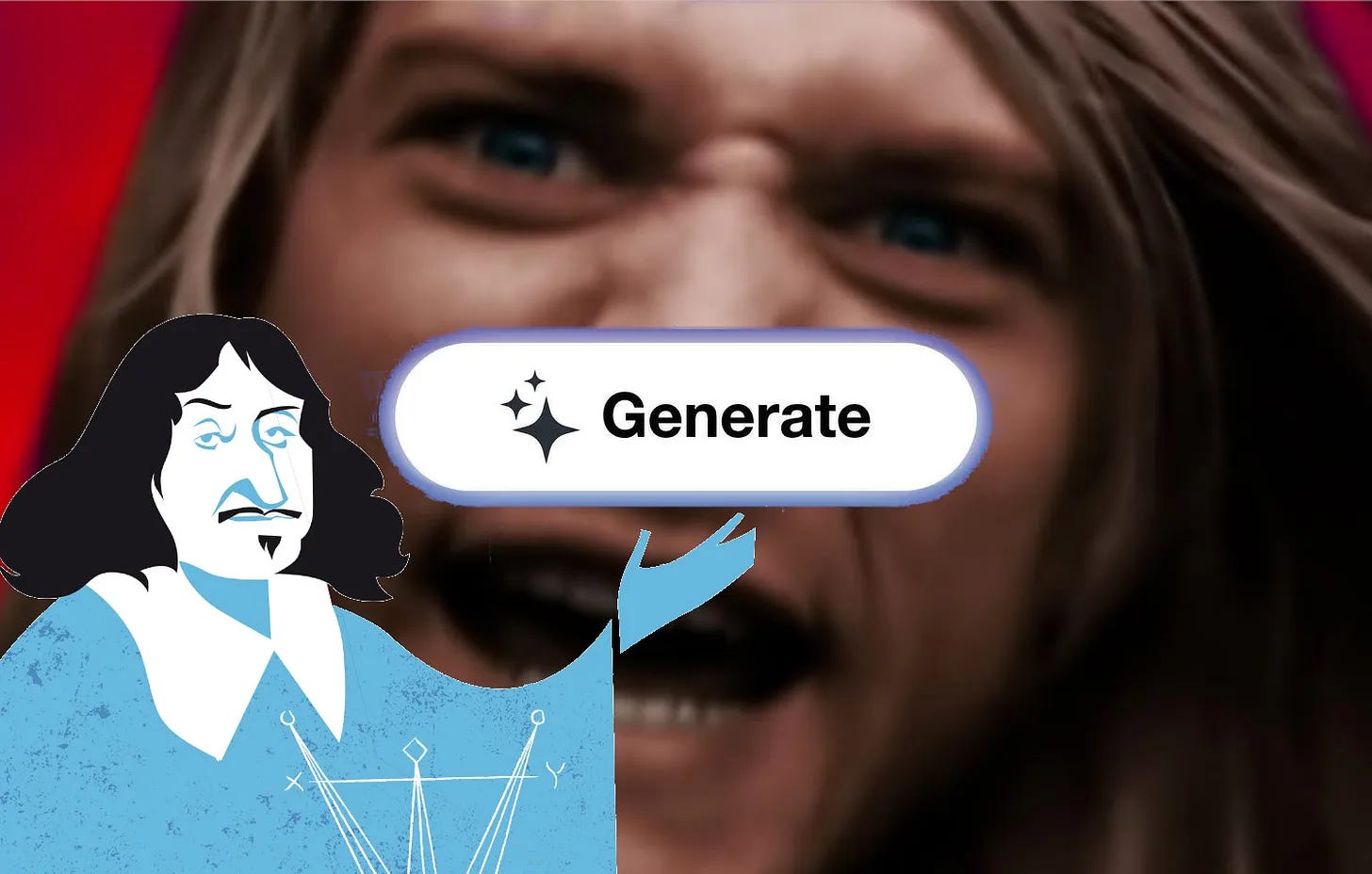The ASOMOCO Top 10 (2024 Edition)
My ten most popular pieces this year, in summary
Paying subscribers can access my 60 minute audio review of every single ASOMOCO essay this year, and the look-ahead to 2025, at the end of this piece!
Localized earthquakes are the results of deeper, hidden tectonic plate movements. Similarly, much national news emerges from deeper and broader transnational processes that escape attention.
That’s why, here on ASOMOCO, I try to avoid chasing the national news cycles of the world. Many pieces I publish focus on deeper processes that go beyond national borders, and which will outlive any particular national government. This gives the pieces an ‘evergreen’ edge, in the sense that they’re intended to last for many years. This means you can go back to discover - or rediscover - them at any point.
In that spirit I’d like to lay out the ASOMOCO Top 10 of 2024, the pieces that were the most popular this year, and which you might want to check out if you’re a newer reader. Also, you can find the 2023 Top 5 here.
1) The Three-Faced Interface
The evolution of corporate personhood in the age of AI
Corporations operate at enormous scale, but that means they have to use interfaces to deal with us. An interface takes a convoluted bureaucratic structure and reduces it to a simplified surface, allowing us to touch the huge beast. In The Three-Faced Interface I delve into how corporations are reskinning their interfaces by giving them first-person pronouns, and making them mimic us. This takes corporate personhood to a whole new level.
(Published: May 26th / Word count: 4200)
2) The Stone-Soup Theory of Billionaires
An antidote to Great Man theories of history
You must have heard all those stories about how billionaires are just uniquely hard-working or brilliant people, and how their wealth simply reflects their enormous contribution to society. We’re told that they built big things: built nations, built companies, and so on, and that - without them - these things surely would not exist. You might sense there’s something suspect about this story, but not quite know how to articulate it. So, if you want to learn how to call bullshit on billionaire worship, check out The Stone Soup Theory of Billionaires, in which I use the fable of the Stone Soup to explain how billionaires position themselves as the focal point around which other people actually do the building of things.
(Published: Nov 14th / Word count: 4600)
P.S. As a follow-up to that, check out the Inner Civil War, published on Dec 4th. This piece did well on its own terms, but can be considered an extension on the themes started in the Stone Soup piece. It shows how we end up in conflicted positions around the ‘soup pot’ of production, and how those conflicts can tear us apart.
3) Surveillance Capitalism 2024, Wrapped
How spying-as-a-service now gets sent to us as a Christmas present
It’s no secret that digital mega-corporations extract data from us, but what are the different methods they’ve used to justify this over the years? In the early days they tried to engineer consent through cringe methods, such as presenting surveillance as a useful service to get us ‘relevant ads’, or to personalize our experience of an otherwise inhuman-scale infrastructure. The most sophisticated technique, however, is to gamify the surveillance, and make it social. A pioneer in this is Spotify, who now sends you a ‘Wrapped’ dossier of your own behaviour each year. In Surveillance Capitalism 2024, Wrapped, I show how the Wrapping Revolution is all about normalising surveillance capitalism as something we not only expect, but look forward to, and even demand. This was a late entry into the running for the ASOMOCO Top 10, but it’s been popular.
(Published: Dec 23rd / Word count: 2900)
4) The Art of Crypto Kayfabe
You know the cage-fight between Bitcoin and the Dollar was staged all along, right?
The investment world is like a fighting league in which different assets battle it out in a common ring. Each asset - such as shares, bonds, real estate, or fine wine - has its own story and its own hype-men, who parade around telling you why you should throw your money at it. In The Art of Crypto Kayfabe, I delve into the unique and contradictory story of one of the latest competitors in this fighting league - Bitcoin. Bitcoin comes packaged with a dual persona. It’s first persona is The Great Dollar-Killah, a fighter that claims to have a feud with the bosses of the league, and who wants to put the entire thing under new management. The second persona is The Mighty Hodlr, a cocky fighter that brags about its US dollar returns relative to the other fighters (shares, bonds, real estate etc). These stories are incompatible, but Bitcoin hype-men use both interchangeably to create tag-team combinations that gaslight the public. The signature tag-team move is countertrade, the process by which dollar-priced assets can be used for exchange, giving them a superficial ‘moneylike’ appearance. In the end, Bitcoin’s story is circular, and this is something that actually serves the true bosses of the league.
(Published: Dec 11th / Word count: 5600)
5) The Emptiness Machine
How generative AI is trying to rip the screaming soul out of the Enlightenment
I’m not the kind of person that gets romantic about The Enlightenment, but The Age of Reason has always been paired with a Romantic twin that gets pissed off with it. There’s a long history of artists and poets who feel dismayed at the dehumanising industrialisation enabled by scientific machines, all while the capitalist elites that grow wealthy from that get all teary-eyed about the opera and collecting artwork. There’s an angsty symbiosis between head and heart, analysis and soul, and this gives rise to different forms of creativity. Scientific tool-building uses creativity to solve problems - real, artificial or imagined - but other forms of creativity are less about fixing-in-place and more about releasing, destabilizing and freeing up. In The Emptiness Machine, I argue that the tool-building class, and their corporate bosses, have launched one of their most devastating attacks on the romantic side of the Enlightenment to date: it’s called generative AI.
(Published: July 2nd / Word count: 2300)
6) Money as Addiction
Escaping solutionist perspectives on our means of survival
According to many economists, we use stuff because we desire it, and because it is, well, useful. They often use this assumption to invent ‘just-so’ stories for why particular things must have been invented: X exists to help us do Y, and if we didn’t have it we’d all be sad because Y is a universal need. In Money as Addiction I show why this is so dodgy. When new things - such as money - are introduced into our world, they are not brought into being by demand (aka. there is no ‘Y’ that pre-dates the ‘X’). Rather, they are brought into being by randomness or political opportunism, and they subsequently create demand by creating a new need. They create this new need by recalibrating our economic environment, in much the same way as a cigarette recalibrates an addict’s body with a new ‘hunger’ that previously didn’t exist. In this article I’m applying this to the history of money, but this point extends to many other things in our world.
(Published: March 15th / Word count: 3800)
7) The Cost of Cash…lessness
How to free your mind from fintech propaganda
Fintech propagandists moan about the so-called ‘cost of cash’. This is the idea that physical cash is a hassle to administer, and exerts some costly drag on society. In The Cost of Cash…lessness, though, I show that cash is costly in the same way that stairs are. There’s a real resource cost to putting stairs into a skyscraper, for example, and a property developer (or elevator salesman) might complain that this is costly, and that it would be more ‘efficient’ to only have elevators. A skyscraper without stairs in a ‘stairless society’, though, is a deathtrap, and there’s a reason why we’re happy to bear the ‘cost of stairs’. Similarly, a society without cash is one of digital corporate domination, surveillance, financial instability, and exclusion. Those are very real social costs that come with ‘cashlessness’, and the cost of cash is a small price to pay to counteract that.
(Published: May 2nd / Word count: 3400)
8) There is no Black Friday
And the overlords of the global village spam us with cultural malware
If we live in a ‘global village’, it’s one in which powerful institutions have rigged up huge billboards in the village square that dominate our view. Single people at Microsoft can push a button to send an image into the search bar of 1.5 billion computers around the world, alerting you to things like Talk like a Pirate Day. Our entire world is stuffed with these top-down projections, utterances and orders that start with a single powerful player and which subsequently turn into ‘culture’, along with the story that somehow it emerges purely from the bottom up. In There is No Black Friday, I go into the various manifestations of this process, including the invention of fake holidays. I also go into one of my favourite concepts: interpellation - the process by which powerful players can create realities by speaking at people as if those people already believe in those realities. This piece also pairs well with the aforementioned Surveillance Capitalism 2024, Wrapped.
(Published: Sept 24th / Word count: 2900)
9) The Accelerationist Playbook
How illusory races towards high scores lead us to corporate domination
Tech isn’t a relaxant. It’s an accelerant. Automation technologies, whether they take the form of AI, digital payments or Uber, primarily make our lives faster, rather than easier, but we’re flooded with stories that present this acceleration as unstoppable progress. In The Accelerationist Playbook, I show the steps by which the tech industry creates this story, starting with the ‘high score model of history’, in which history is seen as a long video game in which we move up levels towards an ever higher score, and how this process is cast as a ‘race’, with leaders, followers and laggards, and how the latter are presented as being in need of saving. I show how to break the chains of this narrative. We need to move towards a new concept of progress as parallel tracks, rather than a single path from the past to the future. This piece pairs very well with the earlier Money as Addiction.
(Published: Sept 17th / Word count: 2000)
10) A Lego Model of Capitalist Central Planning
If you think capitalism is about free markets, you're missing half the picture
I had a lot of fun launching my Lego Corporate Capitalism series this year, and in the third instalment - A Lego Model of Capitalist Central Planning - I show how the core of capitalism involves a lot of central planning. I’m certainly not the first person to make this observation, but I might be the first to try to make Lego models out of it!
(Published: Aug 15th / Word count: 3200)
Honourable mention! Remastering Capitalism
If you’ve ever watched Spinal Tap, you’ll know that iconic scene in which the guitarist talks about his amplifier volume dial going up to 11. In that spirit, I want to add a number 11 honourable mention to the list above, which is Remastering Capitalism. I personally loved writing this piece, and it actually draws on a rock music theme. It uses a metaphor of mixing and mastering albums to show the different ways in which living under a large-scale capitalist system brings out different tracks in us, and changes the EQ of our experience.
(Published Oct 18th / Word count: 3500)
Coming up in 2025
In the end, every piece I publish here on ASOMOCO is dear to me, because I pour a whole lot of effort into them and there’s a reason behind why I’m doing each one. Some pieces, like If Everyone was a Billionaire, were personally important for me, even if they were a bit too geeky or niche for some readers. Insights developed in these more technical pieces will turn up in newer, more accessible pieces in future.
ASOMOCO hosts a number of tracks - 5D Money, Cashback, Global Monetary Observatory, Unboxing Alternative Currency, Lego Capitalism, Big Techtonics, and Econ Life 101 - but each track also feeds into the others. In 2025 I will be building upon all of them. Paying subscribers can access my 60 minute review of all the pieces of 2024, and the look-ahead to 2025 below. Thanks for your support and see you next year!















